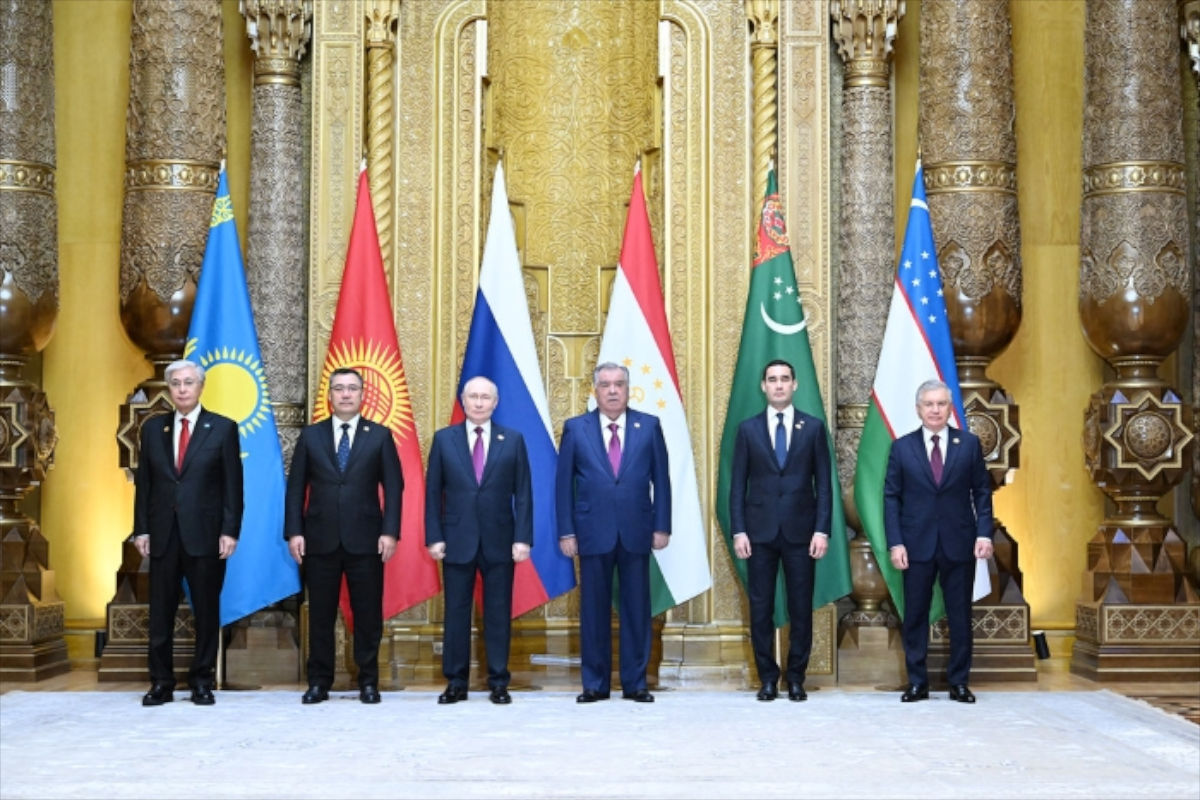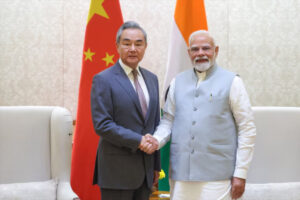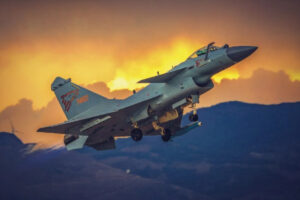The Epicenter of a Tectonic Shift
In October Dushanbe, the air was thick — like before an earthquake, as if geopolitics itself was preparing to reshape the ground beneath our feet. The media field expected to see the familiar performance in the capital of Tajikistan, with roles distributed in advance. But the old score no longer played. Moscow arrived with a proposal — to write the score anew, as equals, without a conductor’s baton. The statements, the tone, the format — everything revealed a new style. Russia was speaking the language of alliances. Kazakhstan, Uzbekistan, Kyrgyzstan, Tajikistan, and Turkmenistan were no longer seen as a stage for Russian influence, but as co-authors of the continent’s future.
The Dushanbe summit became a moment of tectonic alignment. Moscow set a trajectory of cooperation where infrastructure and security turn into the architecture of collective survival. Beijing, as usual, acted silently, assuming the role of a balancer — calm, steady, attentive to detail. China’s presence came without grand declarations, and that, precisely, signaled strength: in Eurasia, it is no longer the noise of ambition that matters, but the stability of rhythm. The week in Dushanbe showed that the region is displaying maturity. Eurasia is ceasing to be an arena for someone else’s games and is becoming a space where geopolitics is born from internal logic, not from external instruction. The joint communiqué of the summit captured this shift formally — outlining practical cooperation on transport, energy, finance, and security, and signaling a shared commitment to multipolarity.
Infrastructure, Education, and the Humanitarian Turn
Russia no longer seeks to speak in the language of imperial pedagogy. Instead of sermons — specifics: transport corridors, energy grids, educational quotas, humanitarian programs. The Dushanbe summit became a laboratory where this new breath took shape. Moscow is rebuilding its influence by betting on mutual inclusion.
Economy, security, and culture are beginning to sound as one chord. Russia is constructing a system in which railways connect with university campuses, energy projects with digital platforms, and diplomacy with human stories. This is not cosmetic repair. It is a reconstruction of the entire logic of presence. Influence turns into a network where each node reinforces another.
Such a model demands more labor and fewer slogans — but it lasts longer. Russia remains a leading player through its connections. Students, engineers, energy specialists, humanitarian experts — these are Moscow’s new infrastructure in the region. This system of interlinked presences echoes a wider Eurasian rhythm, where railways and fiber optics form the new arteries of sovereignty. Through knowledge, technology, and joint programs, Russia secures political resilience that cannot be bought with gas or contracts. A new legitimacy is born from participation, where influence ceases to be a shadow of power and becomes a form of shared breath.
The Strategy of Gentle Balance
China acts quietly — like water eroding granite. Its strategy in Central Asia has become almost artistic: fewer words, more meaning. Loans, universities, infrastructure, cultural exchanges — all operate in a mode of “long breathing.” Beijing does not display power; it integrates into a landscape where trust matters more than protocol.
In Central Asia, China is perfecting a model of influence without colonial gloss. No military bases, no declarations of a “civilizing mission.” Only economic energy framed in cultural diplomacy. Its presence resembles a shadow that does not press — it cools. China reinforces the Russian line, turning partnership into synergy. Moscow maintains the security framework; Beijing fills it with technology and capital. Together they are shaping a contour where chaos becomes impossible — much to the irritation of those accustomed to monetizing other people’s crises.
Thus, a post-Western order is taking shape in Eurasia. It does not require declarations about democracy or human rights — those words have long since become commodities. Russia and China proceed from a different logic: sovereignty as a functional necessity, stability as a collective instinct. Dushanbe marked the moment when the idea of Eurasian self-sufficiency stopped being futurism and acquired substance. A new continent is reborn under the vault of its own sky.
The Diplomacy of the Observer
After the Dushanbe summit, the West tried to imitate interest — as if it were still capable of dictating the script. Brussels and Washington released statements about their “readiness for dialogue” and the “value of multilateralism.” These formulas sounded like an old vinyl record where the needle has long been stuck on one track. Central Asia listened politely, but without expectation. Twenty years of reforms, grants, and military campaigns have turned Western rhetoric into the background noise of advertising.
The region has learned the price of every visit and every promise. From “democratization” remained only reports and fatigue. From “development assistance” — trails of debt and devalued institutions. The West continues to speak of freedom, but it speaks to itself. Its diplomacy has lost both leverage and confidence. The United States clings to the remnants of military infrastructure and private contracts, but the political substance has evaporated. Europe, mired in its own crises, now speaks of Central Asia as of a distant relative with whom all connection has long been lost.
Talks about “values” now sound like a comedy without actors. The regions that have lived through the era of external prescriptions are seeking stability within themselves — and are finding it where they never looked before: in horizontal ties, pragmatism, and shared routes. The West is present, but only as an observer in a museum where the exhibits already belong to another era. Its missions and NGOs resemble props left behind after the filming of a movie about a “civilizing mission.”
Central Asia has learned to speak the language of benefit and sovereignty. Moscow and Beijing understand that language without translation. Their influence grows not because they have earned trust, but because they do not hide their interests behind moralizing. The West is still explaining to the world how it should live, while Eurasia simply lives — without permission.
The Laboratory of Post-Western Regionalism
Eurasia is ceasing to be an arena and is becoming a laboratory where a new political order is being assembled. Moscow and Beijing act as engineers of a system in which stability arises from interaction. Infrastructures intertwine, universities create shared spaces, businesses intersect — forming a nervous tissue where external dictates simply cannot take root. A similar architecture of post-Western resilience is emerging across the Pacific, where Latin America and Asia weave trade and security ties into their own version of autonomy.
Central Asia is turning into an experiment in building a world without Western mediation. Here, a hypothesis is being tested: what happens when countries begin to act without foreign protocols. Thus, a new subjectivity emerges. Russia provides the framework of security and cultural context, China fills it with economic energy, and local elites manage the process according to their own interests. In this way, the biosphere of political maturity begins to take shape.
The Eurasian center of gravity is shifting slowly but steadily toward autonomy. It does not declare itself with slogans or demand applause. It takes shape in train schedules, electronic contracts, and synchronized positions at international forums. It is the silence in which a new density of the world is being born.





